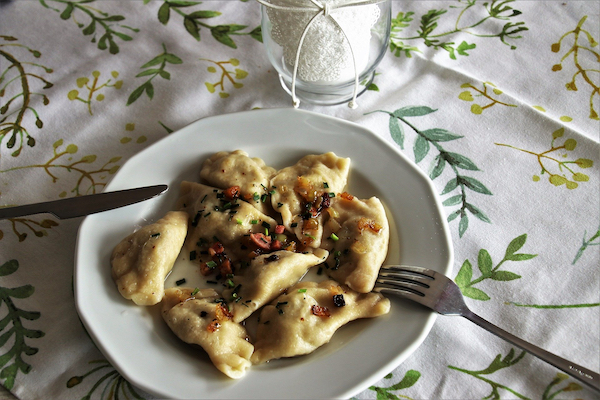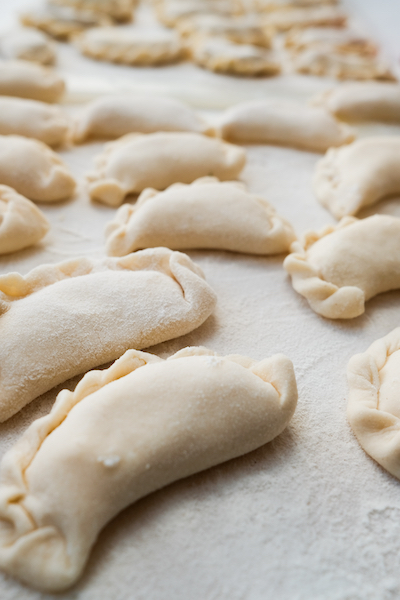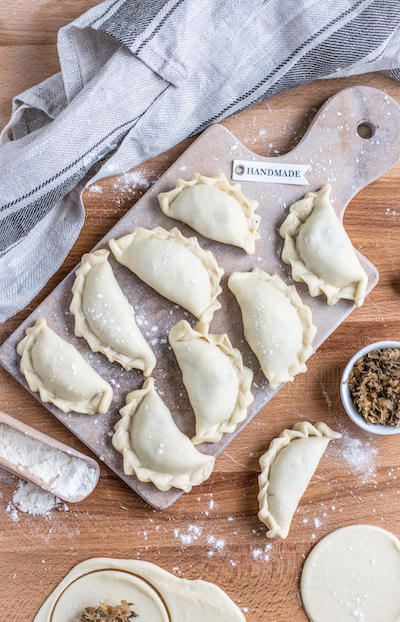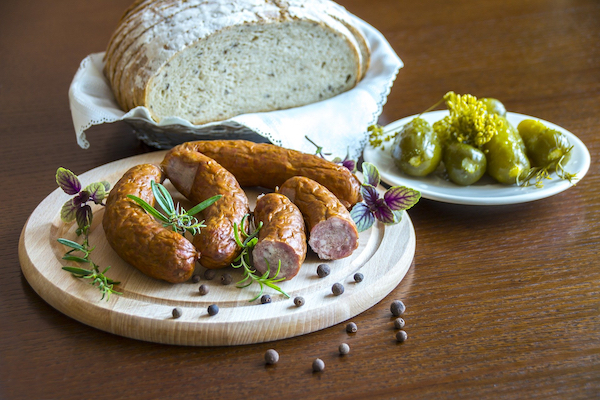
Traditional Polish cuisine
While asking foreigners about Polish cuisine the first thing coming to their minds are usually dumplings (pierogi). However, it is just one of many traditional Polish dishes that are worth trying! Historical events had a great impact on Polish cuisine. During centuries different minorities were coming to Polish lands, adding the part of themselves to Polish traditions. We can distinguish then German, Russian, Tartar, Jewish and surprisingly even French or Italian culinary influences. Traditional Polish cuisine is based on meat, rich in spices and containing a lot of fat. You can find there different kinds of groats, a huge variety of sausages and delicious bread. What is important, cuisine differs significantly from region to region.
However, the most popular national dishes are:
Bigos – sometimes called a hunter’s stew. It is a hot dish based on sauerkraut, that along with pickled cucumbers plays an important role in Polish cuisine, with addition of different kinds of chopped meat, mushrooms and in some variants also wine.
Dumplings (pierogi) – wrapped unleavened dough with a filling of many kinds, for example: sauerkraut and mushrooms, ground meat, fruits or potato with coQage cheese, known as Russian dumplings (pierogi ruskie). It can be boiled, fried or baked served with fried bacon and onion on the top or with sour cream on aside.




Breaded pork chop (kotlet schabowy) – meat loin resembling a Viennese schnitzel with or without a bone. Served with potatoes and fried cabbage or salad on the side.
Gołąbki - cabbage rolls filled with ground meat and rice served with tomato sauce.
While visiting Poland one should also try: beef roulade (zrazy), meat stew (gulasz), chicken or pork jelly (galart), various types of potato dumplings (e.g. pyzy or kopytka).


On the Polish table there are many typical soups:
Sour rye soup (żurek) – soup based on meat decoction thickened with sourdough made of rye flour. Has characteristic sour taste. Typically contains sausage, potatoes and eggs.
Chicken broth (rosół) – soup being a meat and vegetable decoction. Traditionally served on Sunday family dinners with capellini pasta.
Other popular Polish soups are: red beetroot soup (barszcz), tomato soup (zupa pomidorowa), cabbage soup (kapuśniak), sour cucumber soup (zupa ogórkowa), mushroom soup (zupa grzybowa) and tripe soup (flaki).

Polish cuisine would not be complete without traditional desserts,
that Polish people love. Most of them are connected with catholic holidays during a year. We can distinguish:
Pączki – round, closed donuts filled with jam or advocate cream. Traditionally, on Fat Thursday, being the last Thursday before a Lent, Polish people eat tens of millions of pączki to celebrate before keeping a 40-days fast.
Faworki – delicate and crispy deep-fried pastry sprinkled with powdered sugar. They are especially popular during carnival period and on Fat Thursday.

Cheesecake (sernik) – there is no family celebration without the cheesecake on a table. Made of the quark and then baked can be covered with icing or chocolate.


Among other Polish desserts one can find: poppy seed cake (makowiec), gingerbread cookies (pierniki), Easter cake (babka) or cream pie (napoleonka).
The regional cuisine of Great Poland
What Great Poland (Wielkopolska) is famous for?
The first that comes to mind are the potatoes (ziemniaki, pyry). They gained their popularity in this region in the 19th century, when they began to spread. Traditional dishes of Great Poland prepared from potatoes and flour have become the basis of food for a large part of the society. Over time, Wielkopolska cuisine has been influenced, among others, by German, Lithuanian and Ukrainian specialities. This is how regional Wielkopolska dishes were shaped!
Pyry z gzikiem - One of the most famous dishes of this region. Simple, but at the same time tasty dish was originally hosted on the tables of the poorer part of the society. Today, it is a culinary delicacy and a way to preserve the native tradition. Pyry z gzikiem is the flagship dish of Great Poland generally served on Friday, meatless lunches. And what is hidden under the mysterious name?
Pyry are potatoes in the dialect of Great Poland and gzik is quark cheese mixed with cream, onion and whether chives or radish. Importantly, potatoes should be boiled or baked, without peeling - otherwise the dish would lose its character.
Fun fact: Wielkopolska region is informally known as "Pyrlandia" which literally means "Potatoland".
Czernina – Great Poland’s black soup
Another Old Great Poland’s specialty is czernina, also called as black soup or duck blood soup. It is a rather specific, thick soup with a dark color made of ducks blood and clear poultry broth. The soup is concentrated with a flour suspension and seasoned with dried plums and apples, as well as spices. It outstands with its sweet and sour taste, which is gained by the addition of sugar, vinegar and dried fruit. Like most Polish soups, czernina is usually served with noodles, boiled potatoes or dumplings. Fun fact: In the olden days, if a bachelor wanted to ask for a fair maiden's hand and the family did not approve him, he was given czernina as a sign that his marriage proposal was rejected.
Rogal świętomarciński - St. Martin's Croissants
On Saint Martin's day, which falls on November 11, St. Martin’s croissants rule! During this day, the town (Poznań) holds a parade on St. Martin street (ulica Świętego Marcina) and you will not miss them at nearby stalls as well as in local bakeries. Croissants are filled with a mass of white poppy seeds, nuts, raisins, candied fruit, biscuit crumb cake and almond flavoring. Unlike French croissants, the Saint Martin's croissants consist of 81 layers which form the shape of a horseshoe. Then, the top is glazed with icing and sprinkled with chopped nuts. Certainly, there is no shortage of sweets here! All these combined ingredients make this pastry a unique and original product with a European Union certification. It is only available from designated and certified producers and for sure, it cannot be found anywhere else in the world.
Fun fact: Every November 11 more than 700,000 croissants are consumed.
Poznan-style duck
One of the most popular dishes in Wielkopolska region. The duck, roasted whole, is stuffed with lemon, orange, apple and onion and seasoned with salt, pepper and marjoram. The traditional serving is half of duck per person. Duck à la Poznań is typically served with braised red cabbage, baked apples and yeast dumplings/buns (pyzy) cooked over steam. However, you can also find a more “modern” way of serving, for instance, duck as a part of burgers or pierogi.
Fun fact: Every year the contest takes place in which the best duck from Poznań restaurants is selected.


Among all traditional dishes of Great Poland’s cuisine what also cannot be forgotten are: cabbage soup (parzybroda), potato soup with cream (ślepe ryby), potato pancakes (plyndze), potato dumplings (szagówki, szare kluski) or pork knuckle (golonka). When it comes to sweets: buns with different kinds of fillings, f.e. fruits or pudding (drożdżówka), pumpkin pie (ciasto dyniowe) and, of course, potato cake (bambrzok).
